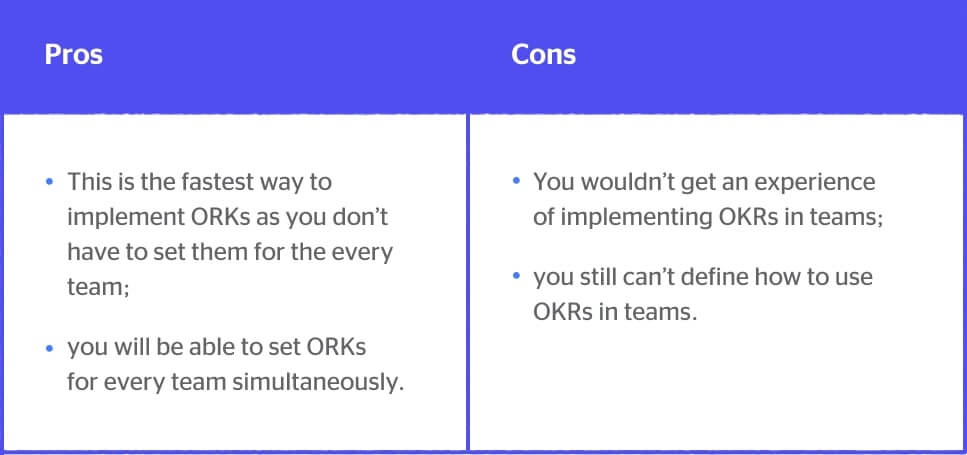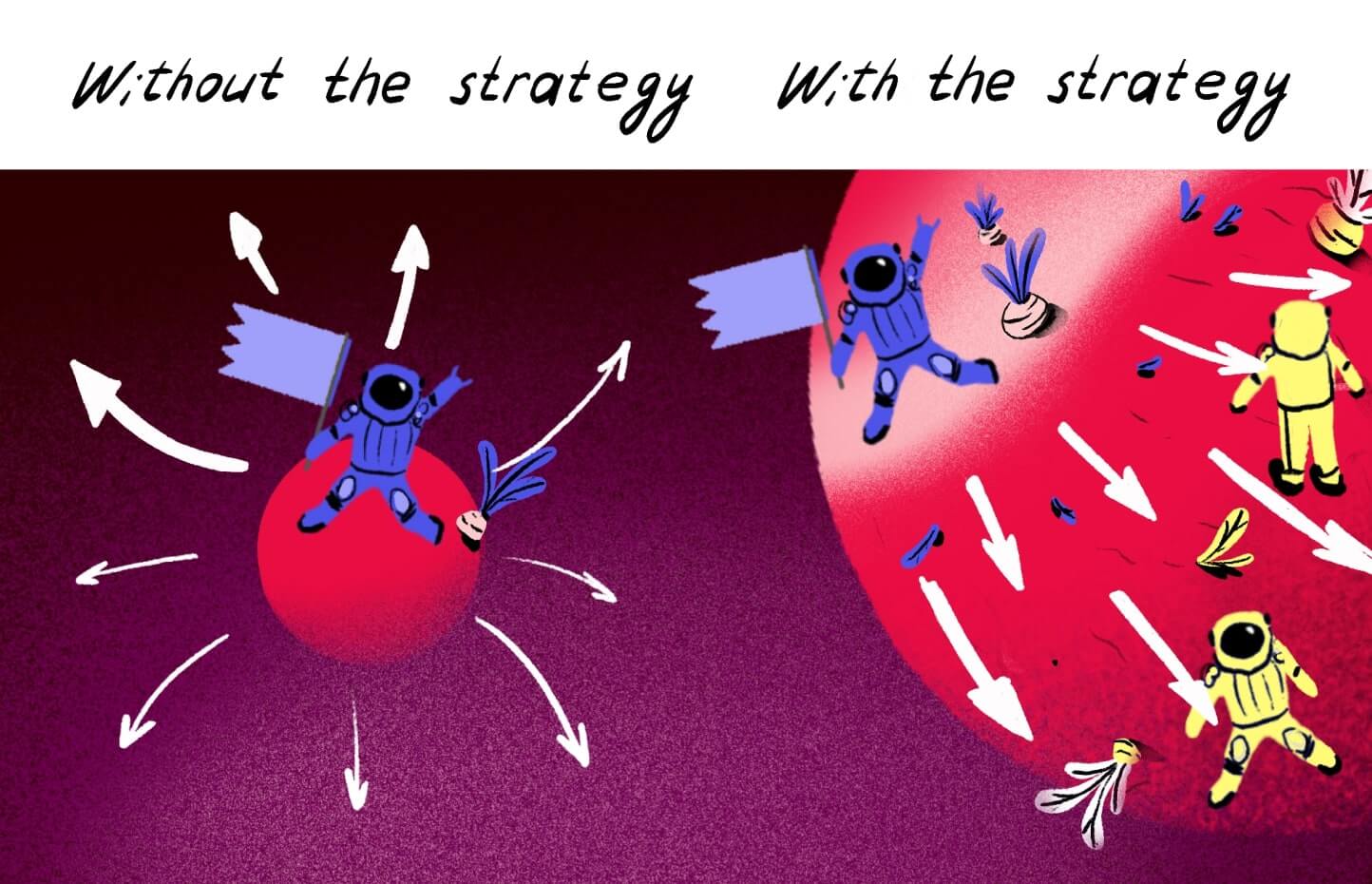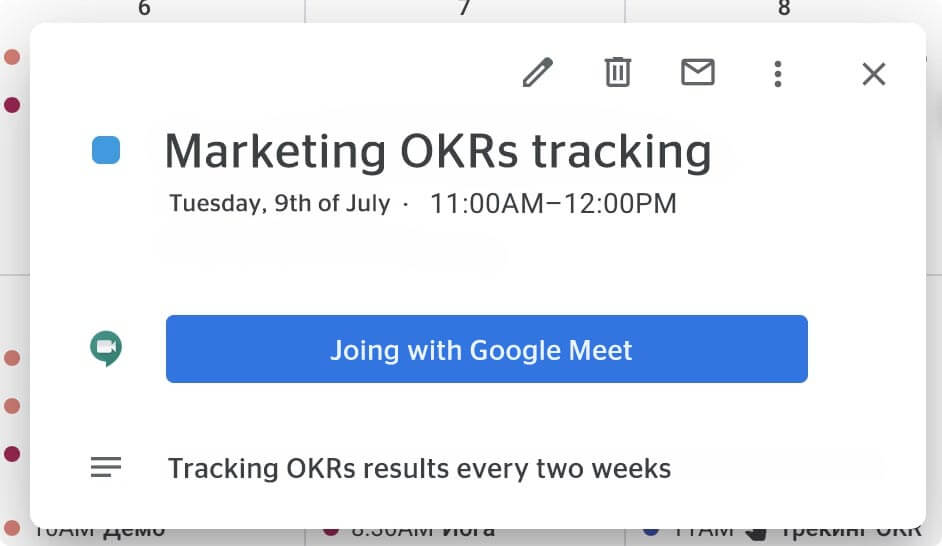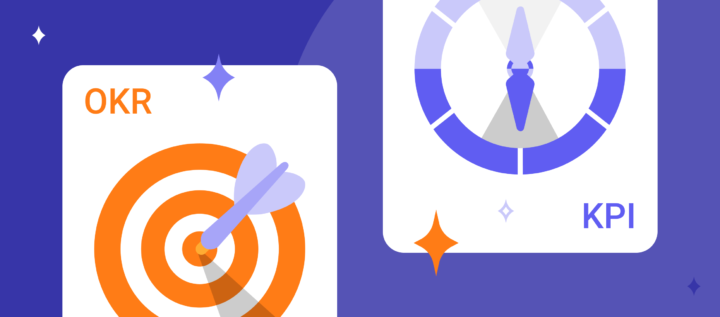The OKR Guide Part Two. Seven Steps to Get Your Company Synced Up

Let’s get going with our series of articles on OKR. Last time, we discussed how objectives should be set and key results defined. Today, we’ll tell you what it means to introduce OKR correctly without ditching them shortly after they are approved, and learn to take the most advantage out of the methodology.
Step 1. Find your perfect way to introduce OKR
The truth is, you can’t introduce OKR correctly on your first try. You need to test-drive the framework and learn to live by the new rules. Perhaps, your first attempt will turn out patchy as your second one. What’s important here is to learn lessons after each iteration and make the right conclusions.
It’s just like that: “First, we’ll meet team leads, brainstorm OKRs and will test-drive them for the next 3 months”. We’re not worried we might not achieve something. Our goal is to attach our actions to OKRs and see where we’re doing great”. This is an MVP approach.
There are 3 ways you can introduce OKR. You can roll them out:
- in one team,
- or among team leads,
- or the whole company.
Your choice may vary depending on the company size. If you’re a thousand-person team, rolling out OKRs among all at once may be harmful. One part of the team won’t get the idea and what they should do, and the other one will rise against changes. You don’t want that kind of chaos, do you?
Introducing the OKR team by team is better for large companies. You’ll see how it works and if the framework suits you. Plus, by the time you decide to roll it out for the whole company, you’ll have the experience. Experiment on a team that wants to try OKR most of all.
It’s perfectly normal to introduce OKR to its full extent in small companies (30-150 employees). They are more versatile and teams inside them are closely interconnected, so it’s easier for them to switch to new frameworks.
Team rollout

Rollout among team leads

Company rollout

Step 2. Sell the idea to your team
We must admit, people don’t like changes and object to them. Make changes more comfortable to your team by explaining what they mean, why they are cool, and how you all will benefit from them. If you highlight it several times, people will see the value and take OKRs for granted.
Make it visually clear by a simple picture: without OKRs, we’re heading separate ways, and with them, you’re making your way to the same destination:

Step 3. Divide strategic and tactical objectives
Different goals require different time limits. Don’t mix the strategic and tactical objectives of the company. Strategic objectives are set for a longer term: a year, two, or five years. Tactical ones require shorter limits: a month or a quarter.
It’s up to the company for what terms to set objectives and key results.
You can only introduce OKRs if you have the strategy, your general growth path. If you don’t, OKRs can be confusing.
Strategic objectives should reflect your company strategy, and tactical ones should follow them. This will help you stay concentrated and head in the right direction.
How we did this in Dashly:
We’ve held the company workshop and paved the company growth path for the next 3 years. Then, we turned to OKRs: we’ve set yearly objectives and key results — they were our strategic OKRs reflecting our strategy. In the end, we’ve split yearly objectives into tactical quarterly ones.
3 steps towards OKRs:
- define strategic objectives for 1-3 years;
- then your tactical ones for a quarter or half a year;
- after that, turn to your quarterly, monthly, and weekly initiatives.
If this is your first attempt with OKRs, set them for a quarter and check your performance bi-weekly. See how you’re doing and set new deadlines if necessary.
Spotify was one of the first companies that introduced OKRs. Now they set strategic company OKRs for half a year for the whole company, while their teams set OKRs for 1,5 months. This helps them remain versatile and be more agile.
If you set objectives and key results for a shorter term, employees view them as a simple task list. This way the OKR concept gets blurred. Thanks to quarterly OKRs, you can have more time to decide on the initiatives and evaluate your performance later.
Though shorter-term OKRs help you remain agile, and that’s a special value for companies living in uncertainty due to the corona crisis. OKRs set for 1-2 months work perfectly.
How we did this in Dashly:
After we stood the thought of the coronavirus changing the world around us, we gave up quarterly OKRs in metrics and switched to monthly ones in projects. This helped us realign and rearrange priorities for this uncertain time. Now that the degree of ambiguity has decreased, we get back to long-term planning and set quarterly OKRs again.
Step 4. Engage the team to set OKRs together
Unlike KPIs, OKRs are not cascaded upside down from team leads. Teams set OKRs independently. How do they do that? When you share company OKRs, teams can set their own based on your mutual vision. Both sides should finalize objectives and key results. Companies can use the W framework to arrange the process and get all employees engaged.
It takes several stages to validate OKRs within the W framework:
OKRs are set at the company level and then cascaded down to teams. Teams can rise against and prove that OKRs should be set differently, then adjust them and go down to an employee level if necessary. After that, OKRs are edited at the company level. Then you repeat the process.
OKR finalization is like writing and editing a text. After you write a text, you send it to an editor to suggest corrections. When you get the text back, you accept or decline suggestions and send it to an editor again to make final suggestions:
- the 1st OKR draft is made at the company level;
- teams get to review the draft;
- teams edit OKRs and suggest corrections;
- employees discuss and edit OKRs, then they return the draft to teams;
- teams review OKRs and hand the document to the top management;
- top managers go through corrections, edit the document and send it to teams;
- the editing iterations continue;
- the draft edited by employees and teams is sent to top managers;
- top managers finalize OKRs and present them to the company.
Step 5. Track your OKR progress
After all stages the company has gone through, employees are still likely to forget OKRs in their working routine. So teams need to gather regularly to see how they proceed. Regular meetings help understand how well employees work on their initiatives, what they should give up, or prioritize.
Regular tracking helps identify bottlenecks and gets the team used to OKR meetings. Hold them once in 1-2 weeks or monthly. Set strict timing not to procrastinate: meetings shouldn’t exceed 30-60 minutes.

You should focus on improving OKRs on your way to success, not your possible failures. If your OKRs are in metric, see how well you’re approaching them or use percent performance scales.
Step 6. Make sure all your teams know the company OKRs
Transparency is crucial when you use OKRs. Each team member should have a chance to open the OKR document and see which objectives other teams set or how close they are to achieving key results. It’s up to you to decide where to keep your OKRs, but don’t forget to do it before you set them. There are software options for OKR tracking: Weekdone or 7Geese. Go to OKRsoftware to compare them and find your perfect match. We in Dashly use Google Docs as the easiest free option.
Step 7. Reflect back on your past OKRs
You risk making the same mistakes if you haven’t achieved your OKRs and start setting new ones. Hold a retrospective meeting after you complete the current OKR stream. See how well synced up teams were, what went wrong, and what your performance was. A retrospective helps analyze your gaps and plan new OKRs thoroughly.
First, each team reflects on their OKRs. Only after that, the top management shares the overall company’s OKRs. Arrange 1-to-1 meetings to discuss personal OKRs and plans for the future.
In Dashly, some employees set personal OKRs. One such initiative included the creation of a library of useful content. One person worked on this OKR. However, it turned out that such a huge project required the whole marketing team. This OKR should be a team one, not personal.
Here’s what you should discuss during a retrospective:
- how teams got used to OKRs: if the OKRs set motivated the team and how well they worked together.
- how you should handle unfulfilled OKRs: maybe your KRs were untenable and you should give them up, or maybe your objective should be reformulated and included in the next OKR stream;
- gap analysis: maybe the company didn’t track OKRs or didn’t engage teams in the OKR setting.
In Dashly, after the OKR period is over, we all gather on a Fish Thursday and our CEO Dimitrii presents overall company results. He shares what we achieved, where we failed or succeeded.
Unachieved OKRs don’t mean someone worked badly. Once again: introducing OKRs is an evolutionary process. It should get better with each iteration. After all, the OKR’s major job is to get the whole company synced up.
5 mistakes companies make when introducing OKR, and so did we
We’d like to share a list of the most common mistakes that companies make introducing OKRs. Don’t worry, we’ve made them, too!
Too many objectives and key results. OKRs help you stay focused. Don’t try to put all your actions and plans there. Define what you’re focusing on this quarter and don’t get scattered.
3 objectives are too many. It’s all about the focus. If you focus on 3 things at once, you lose it. One company objective works perfectly for us. Though, it’s sometimes very hard to decide. “No more than 3 objectives” is our rule.
Spend several weeks planning your OKRs and forget them. You need to track your OKR performance regularly. Gather with your team and see where you succeed or fail. If your objectives are in metrics, track them, and see how well you’re approaching them.
The top management set OKRs and then cascaded them down to teams. OKRs don’t work one way. Engage teams to set OKRs. It’s an iterative process with reviews and corrections at all levels.
Thinking your KRs are just a task list. The key result is an outcome of what you’re doing. If you’re at the very beginning of living with OKRs, set your key results in actions like “release a new feature” or “rearrange the sales process”. Set key results in values and metrics in the following iterations. This approach keeps your options open and gives room for creativity. It doesn’t matter if you’re releasing a new feature or rearranging sales. More importantly, this initiative should guide you to the anticipated result. Read our past article on OKR where we elaborated on the idea.
Hiding key results from teams and employees. OKRs can only work in full transparency. That’s the key principle of this framework. It’s the only way to ensure 100% engagement of the team.









